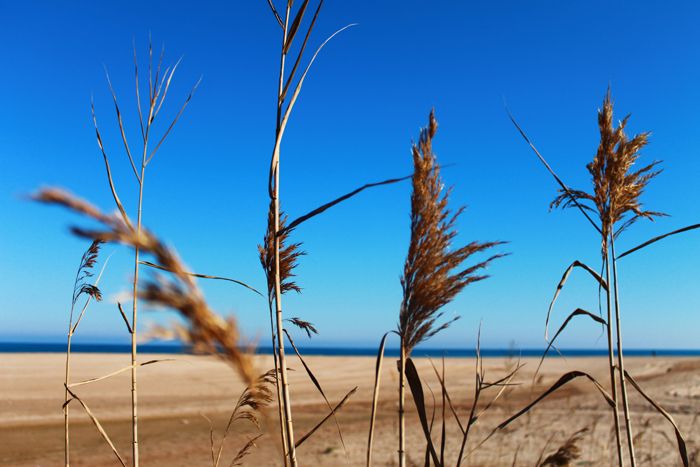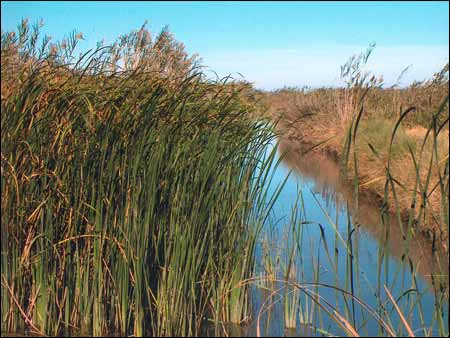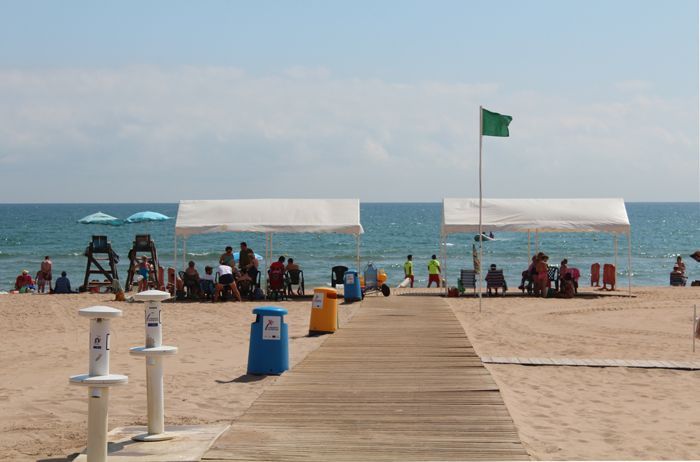Xeraco
Xeraco is a municipality located in the Valencia Region, in the south of the province of Valencia and in the administrative region of La Safor. It lies 56 km from the city Valencia and only 5 km from Gandia. Xeraco borders on the north with Tavernes de la Valldigna, on the east with the Mediterranean Sea, on the south with Xeresa and Gandia, and on the west with Benifairó and Simat de la Valldigna. Xeraco has a population of just over 6,000 inhabitants. The municipality of Xeraco covers an area of 20.2 square kilometres. In the municipality of Xeraco we find beaches, mountains, wetland and a large agricultural area. The climate is very mild throughout the whole year.
One of Xeraco’s most notable features is its extensive beach, measuring some 3km in length. It enormous natural dune ridges and clean waters make it one of the province of Valencia’s highest-quality and most peaceful beaches. In addition to the town’s significant tourist and environmental heritage, such as the historical centre and its surrounds, Xeraco also offers different historical sites of interest, such as the Church of Our Lady of the Incarnation, the Guaita Tower, Cistern and the Chapel of Holy Christ of Agony.
Gastronomy:
Another of Xeraco’s tourist attractions is its cuisine, which is typical to the La Safor area and is clearly rice-based. Xeraco offers a wide range of exquisite rice dishes, including oven-baked rice, rice with fish stock and “la zarzuela”.
These dishes can be sampled at any of the village’s restaurants, both in the town and on the beach, together with salads prepared with fresh produce from Xeraco’s agricultural land.
Another specialty are “tortas” (cakes), especially “torta salada” (savoury cake), a true Xeraco speciality that is prepared in the town’s bakeries. Mention may also be made of the local stuffed peppers.
Just as important as the dishes mentioned above are the town’s sweets: cakes, donuts,… A good sample of the Xeraco’s sweets can be found on the town’s beach in the summer. The village bakeries, as well as Xeraco’s different associations, make their products available at the Xeraco Traditional Sweet Fair, where visitors can acquire example of the local products.
Places of interest:
In addition to the town’s significant tourist and environmental heritage, such as the historical centre and its surroundings, Xeraco also offers different monuments of historical interest, such as the Church of Our Lady of the Incarnation, the Guaita Tower, Cistern and the Chapel of Holy Christ of Agony.
Church of Our Lady of the Incarnation
Located in Plaza de la Iglesia, in the heart of the Xeraco’s historical centre. It was built in the 18th century in the neoclassical style with a modernist façade. It has two bell towers. It has seven side chapels.
Guaita Tower
This is one of the emblems of Xeraco. Located on the right bank of the River Vaca, in an area called “El Gorg”, the area where the river is at its widest and deepest. It is about two kilometres from the beach. It was built in the 16th century as a surveillance and maritime defence for the Kingdom of Valencia. Circular tower.
La Cisterna
Located between Calle Cervantes and Calle Pintor Sorolla. It is an underground building, made of stone and covered with a barrel vault, and which was used to collect water from underground streams (1885). Today it houses the local museum.
Hermitage of the Holy Christ of Agony
Located in the historical centre of Xeraco. It was built in the 19th century. The hermitage is dedicated to the patron saint of Xeraco, “Holy Christ of Agony”.
Festivities:
On 16th and 17th January, festivities are held in honour of Saint Anthony the Abbott. Activities include bonfires, the blessing of animals, blessed bread and a pilgrimage.
On 12 and 13th June, festivities are celebrated in honour of Saint Anthony of Padua, the patron saint of the town. The celebrations include recreational and religious events.
During the 3rd week of July, festivities are celebrated in honour of Our Lady of Mount Carmel, and in the 3rd week of September the town’s main festivities are held in honour of Saint Isidore. Saint Raphael, Our Lady of Sorrows and Saint Anthony of Padua.






